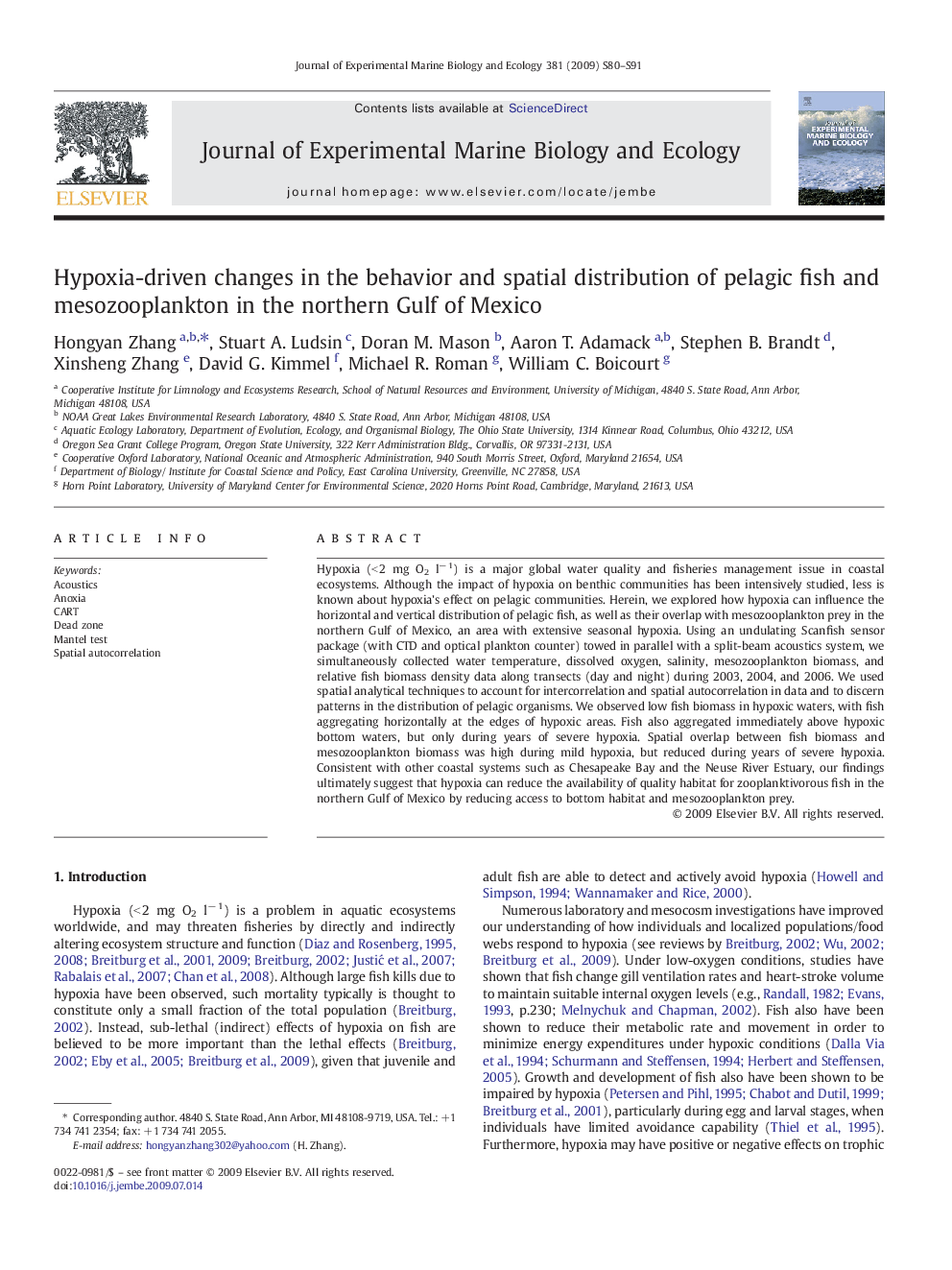| Article ID | Journal | Published Year | Pages | File Type |
|---|---|---|---|---|
| 4396796 | Journal of Experimental Marine Biology and Ecology | 2009 | 12 Pages |
Hypoxia (< 2 mg O2 l− 1) is a major global water quality and fisheries management issue in coastal ecosystems. Although the impact of hypoxia on benthic communities has been intensively studied, less is known about hypoxia's effect on pelagic communities. Herein, we explored how hypoxia can influence the horizontal and vertical distribution of pelagic fish, as well as their overlap with mesozooplankton prey in the northern Gulf of Mexico, an area with extensive seasonal hypoxia. Using an undulating Scanfish sensor package (with CTD and optical plankton counter) towed in parallel with a split-beam acoustics system, we simultaneously collected water temperature, dissolved oxygen, salinity, mesozooplankton biomass, and relative fish biomass density data along transects (day and night) during 2003, 2004, and 2006. We used spatial analytical techniques to account for intercorrelation and spatial autocorrelation in data and to discern patterns in the distribution of pelagic organisms. We observed low fish biomass in hypoxic waters, with fish aggregating horizontally at the edges of hypoxic areas. Fish also aggregated immediately above hypoxic bottom waters, but only during years of severe hypoxia. Spatial overlap between fish biomass and mesozooplankton biomass was high during mild hypoxia, but reduced during years of severe hypoxia. Consistent with other coastal systems such as Chesapeake Bay and the Neuse River Estuary, our findings ultimately suggest that hypoxia can reduce the availability of quality habitat for zooplanktivorous fish in the northern Gulf of Mexico by reducing access to bottom habitat and mesozooplankton prey.
